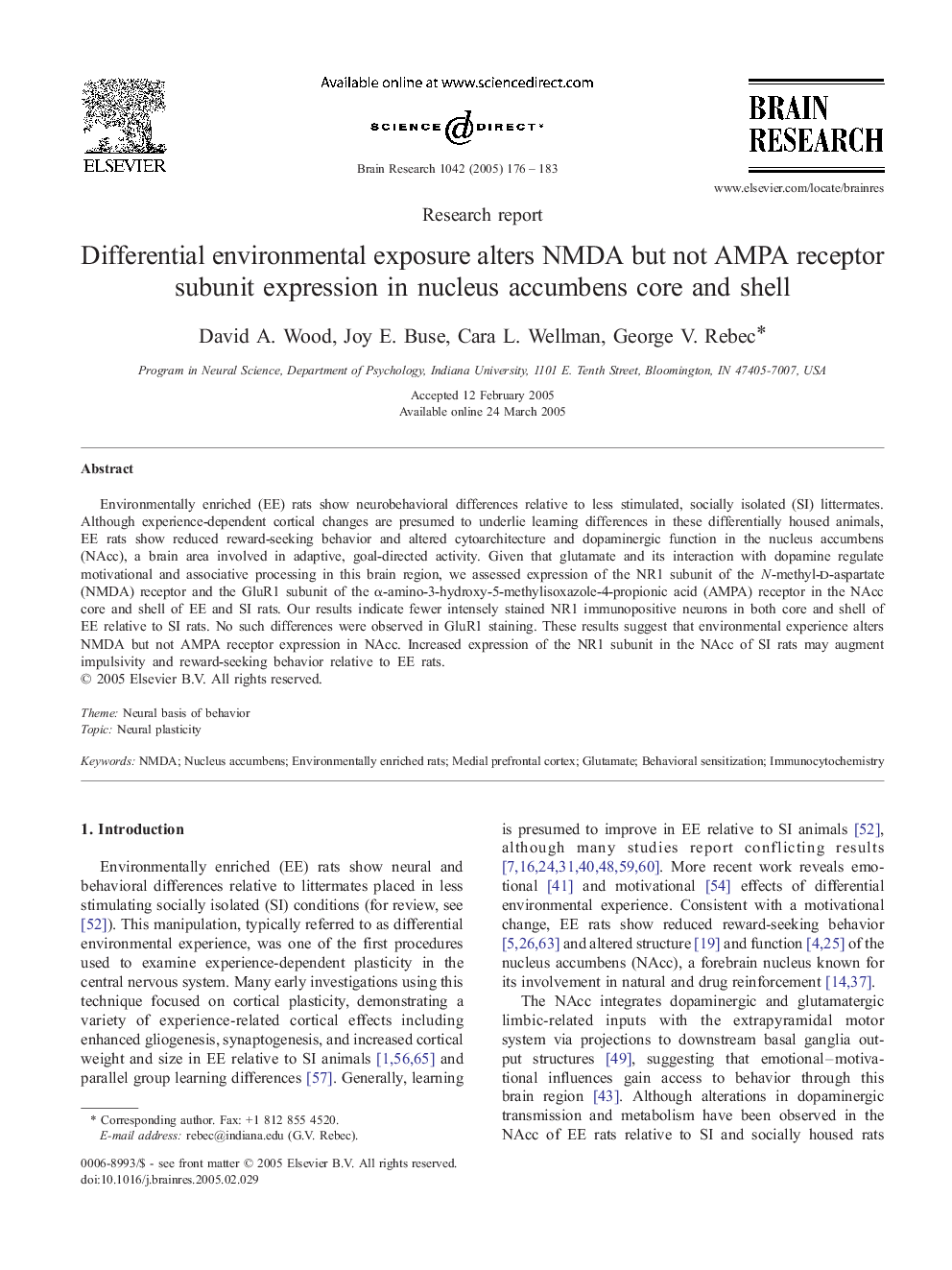| Article ID | Journal | Published Year | Pages | File Type |
|---|---|---|---|---|
| 9416506 | Brain Research | 2005 | 8 Pages |
Abstract
Environmentally enriched (EE) rats show neurobehavioral differences relative to less stimulated, socially isolated (SI) littermates. Although experience-dependent cortical changes are presumed to underlie learning differences in these differentially housed animals, EE rats show reduced reward-seeking behavior and altered cytoarchitecture and dopaminergic function in the nucleus accumbens (NAcc), a brain area involved in adaptive, goal-directed activity. Given that glutamate and its interaction with dopamine regulate motivational and associative processing in this brain region, we assessed expression of the NR1 subunit of the N-methyl-d-aspartate (NMDA) receptor and the GluR1 subunit of the α-amino-3-hydroxy-5-methylisoxazole-4-propionic acid (AMPA) receptor in the NAcc core and shell of EE and SI rats. Our results indicate fewer intensely stained NR1 immunopositive neurons in both core and shell of EE relative to SI rats. No such differences were observed in GluR1 staining. These results suggest that environmental experience alters NMDA but not AMPA receptor expression in NAcc. Increased expression of the NR1 subunit in the NAcc of SI rats may augment impulsivity and reward-seeking behavior relative to EE rats.
Keywords
Related Topics
Life Sciences
Neuroscience
Neuroscience (General)
Authors
David A. Wood, Joy E. Buse, Cara L. Wellman, George V. Rebec,
